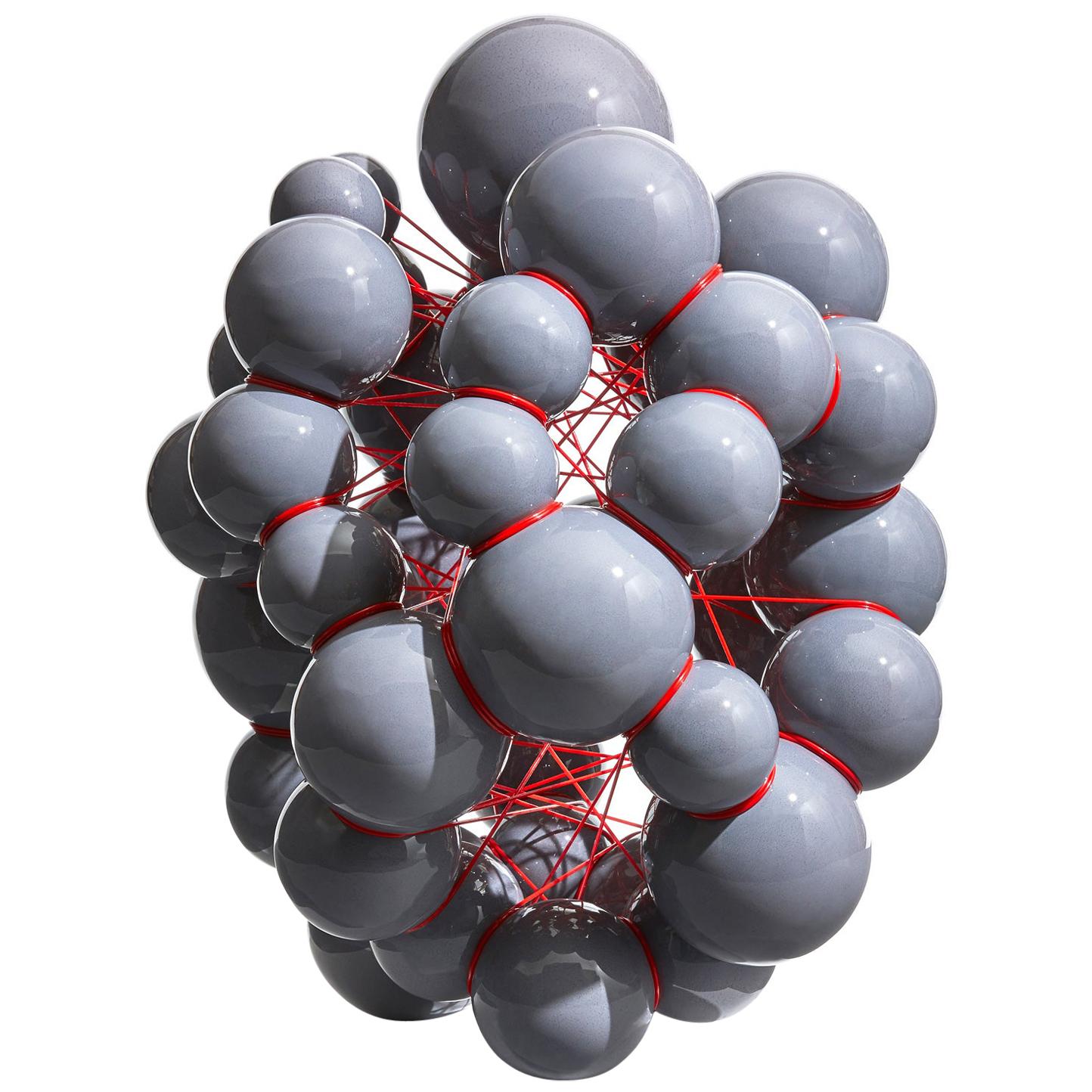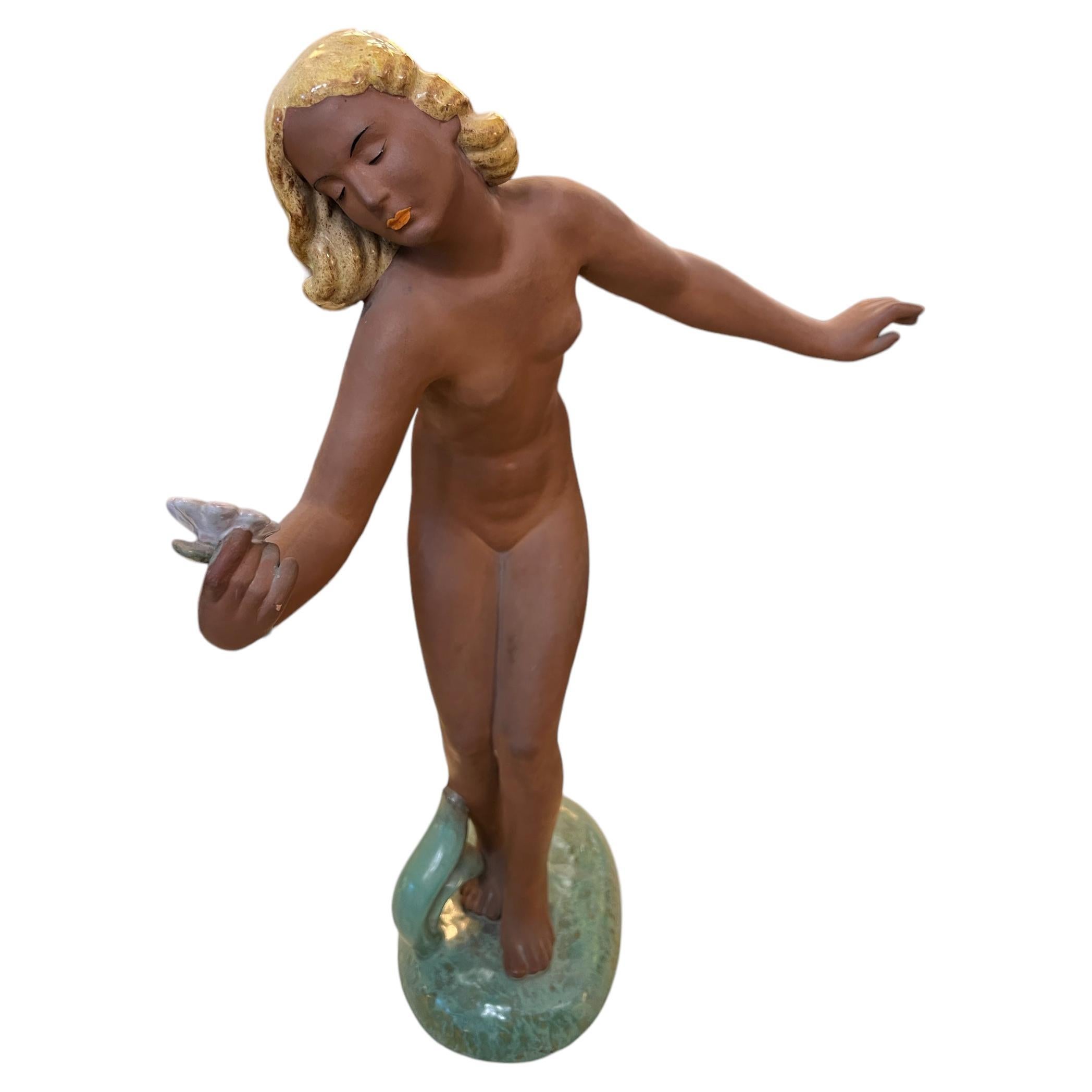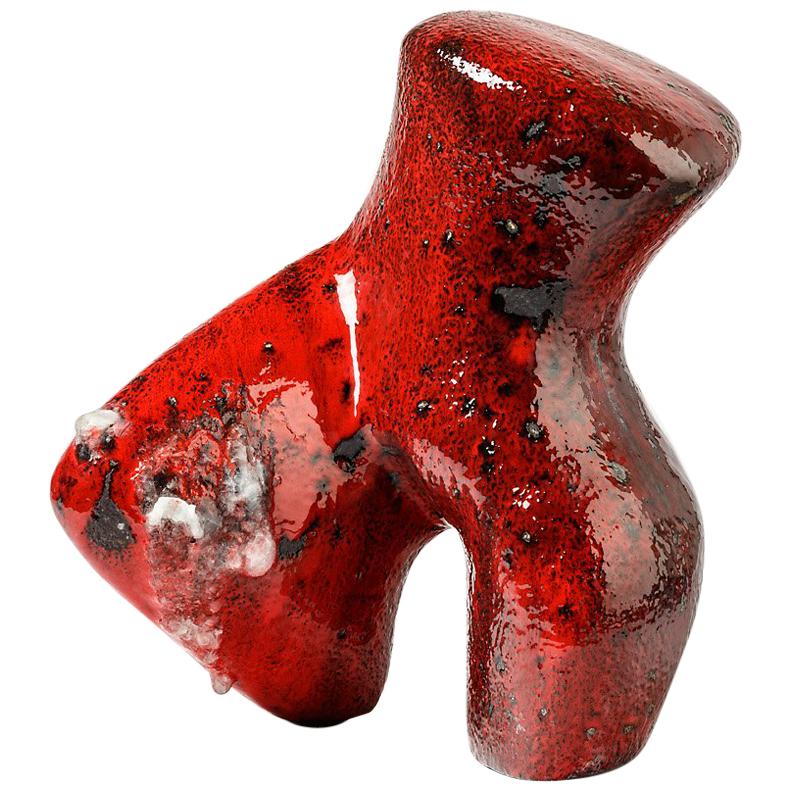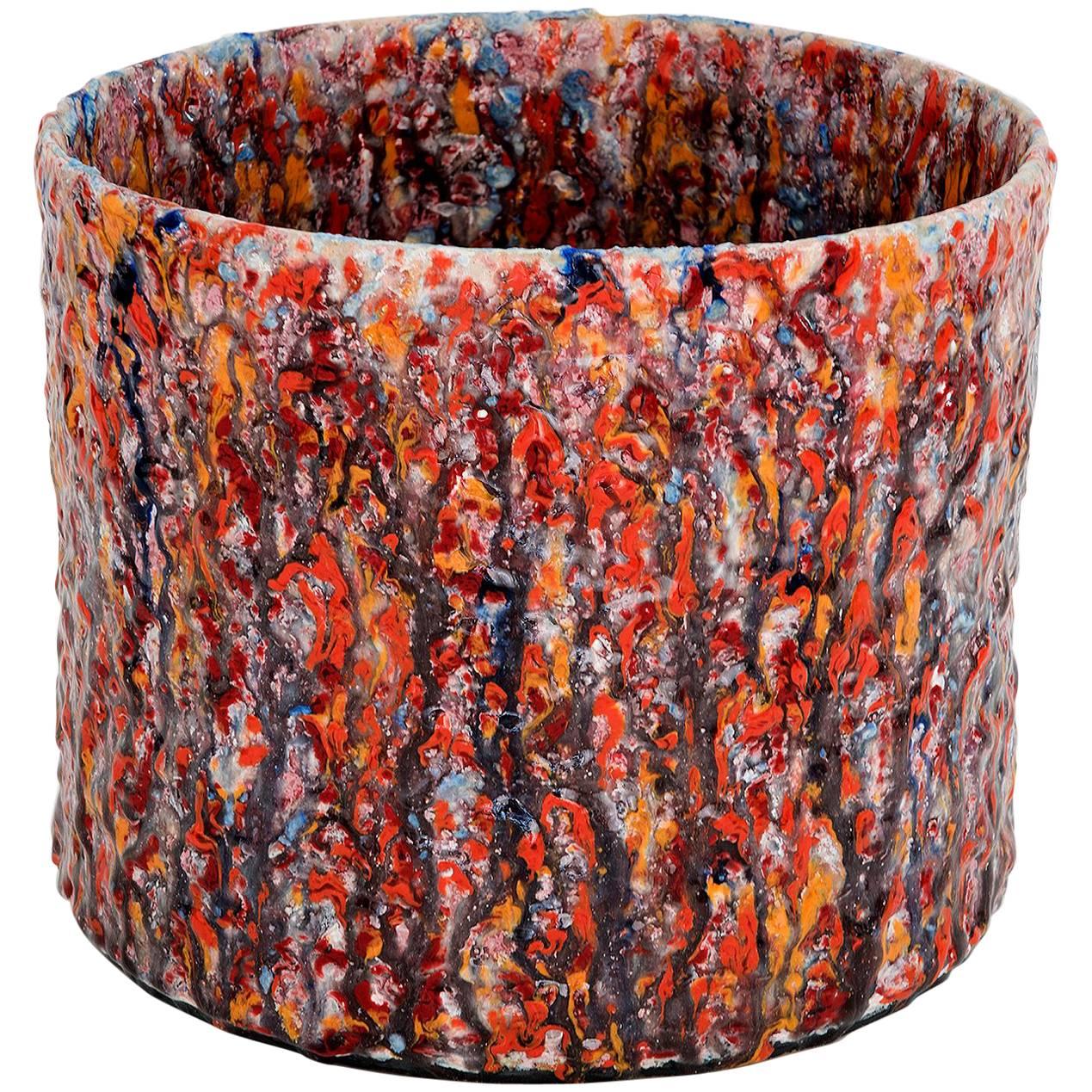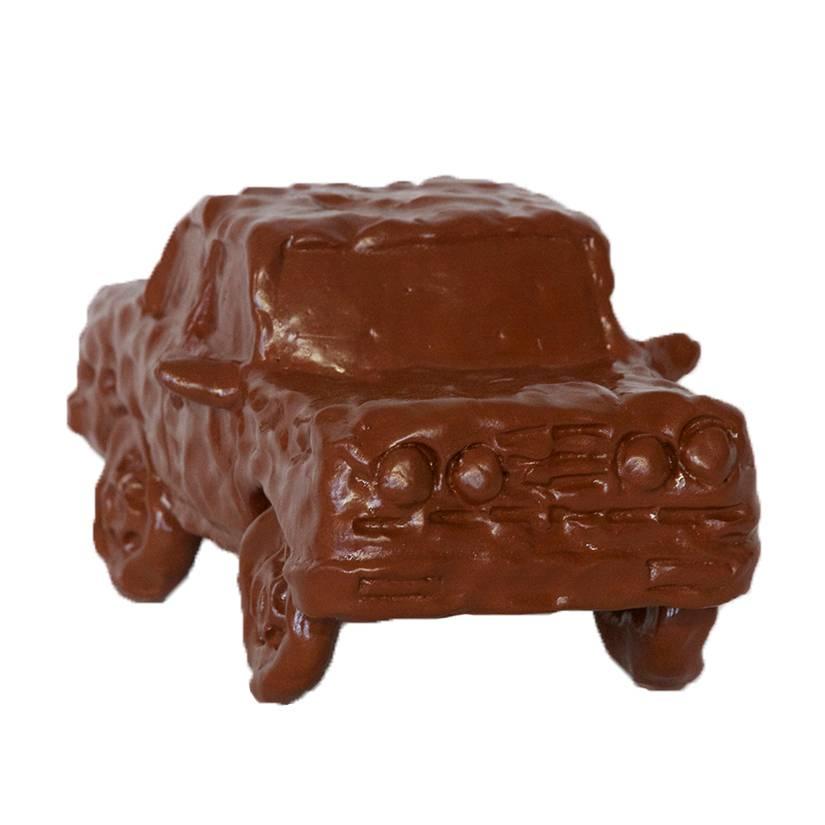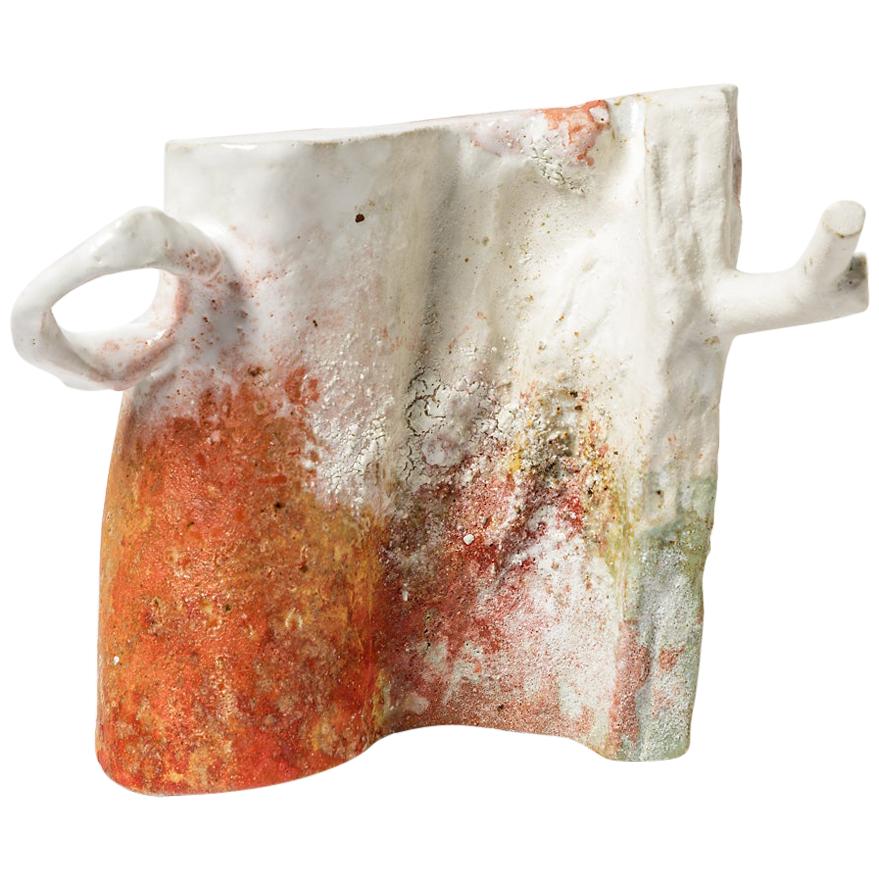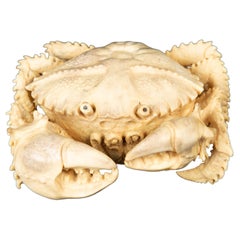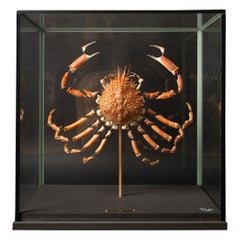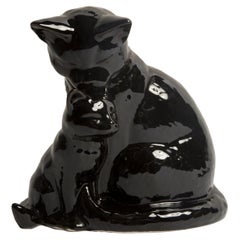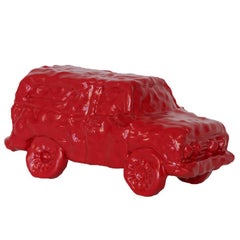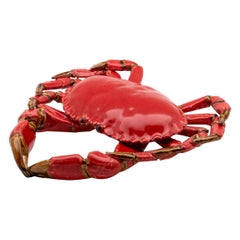
Portuguese Handmade Pallissy or Majollica Red Ceramic Crab
View Similar Items
Want more images or videos?
Request additional images or videos from the seller
1 of 11
Portuguese Handmade Pallissy or Majollica Red Ceramic Crab
About the Item
- Dimensions:Height: 3 in (7.62 cm)Width: 9 in (22.86 cm)Depth: 9 in (22.86 cm)
- Style:Other (In the Style Of)
- Materials and Techniques:
- Place of Origin:
- Period:
- Date of Manufacture:Contemporary
- Production Type:New & Custom(One of a Kind)
- Estimated Production Time:Available Now
- Condition:
- Seller Location:New York, NY
- Reference Number:Seller: CE357-RC1stDibs: LU1531218375592
About the Seller
5.0
Vetted Seller
These experienced sellers undergo a comprehensive evaluation by our team of in-house experts.
Established in 2010
1stDibs seller since 2015
606 sales on 1stDibs
More From This SellerView All
- White Serpent Chalice and Saucer, Oriel HarwoodBy Oriel HarwoodLocated in New York, NYWhite serpent chalice and saucer, Oriel Harwood. Harwood is a ceramicist and artist who is represented by David Gill galleries and creates fantastic and mystical ceramic objects, fur...Category
21st Century and Contemporary Animal Sculptures
MaterialsCeramic
- Hand-Carved Moose Antler CrabLocated in New York, NYThis exquisite hand-carved moose antler piece is a truly unique and exceptional work of art originating from Indonesia. Carved from a single piece of moose antler sourced from North ...Category
21st Century and Contemporary Animal Sculptures
MaterialsAntler
- Deconstructed Spiny Spider Crab (Maja Brachydactyla) Specimen Under Glass CaseLocated in New York, NYDeconstructed Spiny Spider Crab (Maja Brachydactyla) Specimen Under Custom Glass Case. Maja brachydactyla belongs to the Majidae family and is a type of crab. Initially considered a...Category
21st Century and Contemporary French Other Natural Specimens
MaterialsShell, Glass, Wood
- Large Hand-Carved Red Jasper Bowl from IndiaLocated in New York, NYHand-carved and polished out of a solid piece of red jasper stone. This 6" large bowl was crafted by artisans in India, trained from generation to generation in the art of stone carv...Category
2010s Indian Other Decorative Bowls
MaterialsStone
- Gilded Tole Marijuana or Cannabis Potted Plant, Park Avenue Pot PlantLocated in New York, NYPark Avenue pot plant! Beautifully gilded tole marijuana or cannabis plant in a silvered ceramic pot with several large buds.Category
21st Century and Contemporary American Other Planters, Cachepots and Jar...
MaterialsTôle
- Silvered Tole Marijuana or Cannabis Potted Plant, Park Avenue Pot PlantLocated in New York, NYPark Avenue pot plant! Beautifully silvered tole marijuana or cannabis plant in a silvered ceramic pot with several large buds.Category
21st Century and Contemporary American Other Natural Specimens
MaterialsTôle
You May Also Like
- Midcentury Medium Black Cats Ceramic Sculpture, Portugal, 1960sLocated in 05-080 Hornowek, PLPortugal ceramic, perfect condition, produced in 1960s.Category
20th Century Portuguese Mid-Century Modern Animal Sculptures
MaterialsCeramic
- "Red Retiree Grocery Runner Pickup" Glazed Ceramic Car SculptureBy Keith Simpson, Fort MakersLocated in Brooklyn, NYKeith Simpson has made these types of ceramic vehicles intermittently over the past years. He likes to make the underdog car models. Keith says, "They are like the cars that you migh...Category
21st Century and Contemporary American Other Figurative Sculptures
MaterialsCeramic, Stoneware
- Handmade Grey Ceramic Sculpture by Steen IpsenBy Steen IpsenLocated in New York, NYTied Up 20, 2016 (Ceramic, PVC; Unique, C. 20 in. h x 14 in. w x 14 in. d, Object No.: 3646) Steen Ipsen was born in 1966 in Denmark and lives and works in Copenhagen. He graduated ...Category
21st Century and Contemporary Danish Ceramics
MaterialsCeramic, Pottery
- Ceramic Red and Black, Style, Art DecoLocated in Ciudad Autónoma Buenos Aires, CCeramic Sign: Made in Austria Keramos 2051 19/M Wiener Keramos, later Keramos AG or Keramos KG , was a Viennese ceramics manufacturer that made a name for itself especially in the interwar period . In addition to their own designs, designs from the dissolved Wiener Werkstätte were also produced from 1932 onwards. In over 60 years of company history, around 3000 model designs have been produced by around 60 ceramists. Keramos also carried out commissions from the Wiener Werkstätte, such as vases by Dagobert Peche . History The origins of the Keramos company lie in two companies with the same name. The company Keramos – Invalid Society for Viennese Art Ceramics was founded at the end of 1919 on the initiative of the three ceramists Rudolf Wolf, Heinrich Wolf and Ludwig Rys, who had become invalids in World War I. Production started in September 1920. Art-ceramic lamps, figures, vases and boxes were produced. The company Keramos – Viennese art ceramics and porcelain manufactory was founded in 1920. Josef Hoffmann was a shareholder of Keramos for a long time, as was the sculptor Rudolf Podany, who was engaged from the start and created a large number of designs. From 1921 Anton Klieber was employed, who was also responsible for most of the models. Around 1924 both companies were merged and converted into an AG, commercial director became Otto Köller, the technical directors were the brothers Rudolf and Heinrich Wolf. "Some war invalid ceramists founded a workshop with the help of some artists, which was subsequently financed by the state and later enlarged with its participation and converted into a joint-stock company." The company's headquarters were in the Hofburg , Schwarze-Adler-Stiege, the factory in the 10th district of Vienna, Schleiergasse 17. Artistic collaborators at that time were Eduard Klablena , Otto Prutscher , Karl Perl , Karin Jarl-Sakellarios , IDA Schwetz- Lehmann and Grete Fucik-Fischmeister. On February 23, 1928, the triangular mark was entered in the trademark register. It was now also produced for the Wiener Werkstätte. Difficulties for the company arose from the Great Depression . Around 1932, 50 people were employed and a large number of models from Eduard Klabena and the dissolved Wiener Werkstätte were taken over. The works created by Keramos were labeled with their company brands until after 1941. From 1939 the economic situation of the company was better managed by taking over the production of ceramic winter welfare organization badges, the so-called WHW badges. Before 1941 the company is converted into a KG named Keramos, Wiener Kunstkeramik und Porzellanmanufaktur Brüder Wolf KG . Otto Köller was no longer active from this point on. After the end of World War II, Robert Obsieger recommended Robert Mathis as the new head of Keramos, who took over the management of the ceramics manufactory in 1945. In 1949 Mathis introduced a new company logo, which was used alongside the existing triangle mark, the so-called coat of arms mark. Anton Klieber and Rudolf Podany continued to work as ceramists, and new artists such as Josef Lorenzl and Stephan Dakon , both of whom had previously worked for Goldscheider , as well as Rudolf Chocholka, Karl Grössl and Ina Eisenbeisser were engaged. New models such as dancers, children's figures, animals and nudes were created, as well as the well-known wall masks, young people and poodles from the mid-1950s, which corresponded to the trend at the time. In addition, however, traditional designs such as Madonna statues and busts, saints and angels were still made. Utility ceramics such as crockery, vases, lamp bases, candle holders and flower pots also became an important branch of production, and cooperation with the German manufacturer Carstens at the beginning of the 1960s was just as lucrative. In the course of the 1960s, the sales markets for figurative ceramics became increasingly difficult. So until 1982, production was increasingly shifted to everyday ceramics, since ceramic figures were no longer modern due to changing tastes and the spirit of the times. Ultimately, the economic situation at Keramos became more and more difficult and Klaus Mathis, the son of Robert Mathis and then director, who succeeded his father at the helm of the company at the beginning of the 1970s, initiated the liquidation of the company at the end of 1982 . Staff The following artistic collaborators have worked for Keramos over the years: Hans Adametz , Franz Barwig the Elder , Franz Barwig the Younger , Andreas Beck, Hans Bolek, Angelo Bortolotti, Hertha Bucher , Rudolf Chocholka, Stephan Dakon , Ferdinand Doblinger, Eckstein, Franz Eggenberger , Ina Eisenbeisser, English, Stephan Erdös, Alois Feichtinger, Feyslitz, Hans Friedberger, Grete Fucik-Fischmeister, Kurt Goebel, Anton Grath, Karl Grössl, M. Günther, Otto Hafenrichter, Arnold Hartig , Friedrich Herkner, Trude Hillinger, Leopold Hohl, Hostasch, Karl Jamök, Karin Jarl-Sakellarios , Eduard Klablena, Klar, Anton Klieber, Maria Klinger, Josef Kostial, Josef Lorenzl , Wilhelm Otto Lugerth, Viktor Matula, Gusty Mundt-Amman, Novotny, Carl Perl, Rudolf Podany, Friedrich Pollak, Hugo Postl, Adolf Prischl, Otto Prutscher , Max Rieder , Elisabeth Rieger-Hofmann, Walter Ritter , Willibald Russ, Karl Sailer, Schönberg, Schwarz, Ida Schwetz-Lehmann , Sult, Robert Ullmann , Otto Weigand, IDA Weiss-Moricz, Rudolf Wolf. Exhibitions • Jubilee exhibition of the Wiener Kunstgewerbeverein, Austrian Museum , Vienna 1924. • Arts and Crafts Exhibition, Paris, 1925. • Exhibition of Austrian arts and crafts...Category
Vintage 1930s Austrian Art Deco Figurative Sculptures
MaterialsCeramic
- Michael Powolny Style Putto or Putti Ceramic SculptureBy Michael PowolnyLocated in New York, NYExceptional Austrian Putto in the style of Michael Powolny with bow, arrow and quiver on his back sitting on a colorful bed of blue bubbles. Magnificent s...Category
Vintage 1920s Austrian Figurative Sculptures
MaterialsCeramic, Stoneware
- Rare Ceramic Sculpture with Red Glaze Decoration by Tim OrrBy Tim OrrLocated in Saint-Ouen, FRA rare ceramic sculpture with red glaze decoration by Tim Orr. Perfect original conditions. Signed under the base, circa 1970-1980.Category
20th Century French Beaux Arts Abstract Sculptures
MaterialsCeramic
Recently Viewed
View AllMore Ways To Browse
Glass Crab
1500s France
Chinese Porcelain Blue Birds
Peonies And Roses
Blue Chinese Dish
Orange Chinoiserie
Mug Set
English Ironstone
Octagonal Chinese
Hand Painted Plate Orange
Carl Harry Stalhane Swedish Ceramics
Enamel Painted Plate Blue
Mid Century French Ceramic Plater
Mason Ironstone Patterns
Arabia Vintage Finland
Finland Arabia Vintage
Ironstone China England
Speckled Silver


